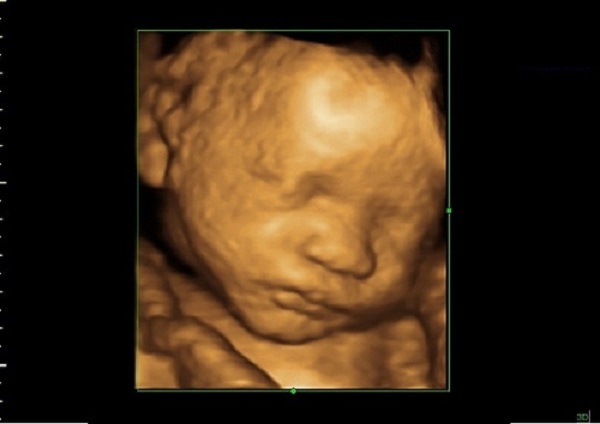This week, the Supreme Court of the United States agreed to hear arguments on the constitutionality of Mississippi’s 2018 Gestational Age Act. This law bans abortion after 15 weeks into a pregnancy. A central question in the case will be “viability”: whether a fetus can survive outside the womb at 15 weeks.
This case provides an opportunity for the Supreme Court to deliver a much-deserved death blow to Roe v. Wade.
In 1973, Roe opened the door for abortion on demand and the tragic deaths of more than 63 million unborn children. For decades, conservatives and anti-abortion voters have worked to overturn this decision. However, the Supreme Court upheld Roe in Planned Parenthood v. Casey in 1992. While Casey slightly modified Roe, the justices made it clear they were not overturning the central premise of Roe, which allows for abortion on demand.
One element of Roe not modified in Casey was its holding that abortion cannot be prohibited before the viability of a pregnancy. Such restrictions, according to the Supreme Court, create an “undue burden” on a mother’s decision to terminate her pregnancy. The “undue burden” standard, whatever it means, is now used by the Supreme Court to determine if abortion restrictions are constitutional.
The viability of a pregnancy is medically defined as the point in time an unborn child may live independently outside of his or her mother’s womb — albeit with artificial means. The time when a pregnancy becomes viable is a judgment subject to the current ability of medical technology to sustain life.
SUPPORT LIFENEWS! If you like this pro-life article, please help LifeNews.com with a donation!
Viability is not a measurement of the humanity of an individual. Rather, it is a measurement of the state of medical technology. For example, a human being on the moon without a spacesuit is still a human being, although not a viable one. Likewise, a deep-sea diver without an oxygen tank is not viable even though fully human.
In Roe, the Supreme Court said viability (not humanity) occurs at 24 weeks gestational age. However, today’s medical advances have made it possible for much younger children to survive outside the womb.
Justice Harry Blackmun, the author of Roe, gave a very curious and illogical reason for determining that viability is the critical point in a mother’s pregnancy to protect the life of her child. He said it was at this stage that the child is “capable of meaningful life outside the womb.”
This is troubling indeed. According to Blackmun, human life cannot be protected by the law unless it is “meaningful.” Accordingly, unborn human life is not “meaningful” until the subjective state of its viability is achieved.
Why should such a legal standard continue? If the life of a pre-viable unborn child is not “meaningful,” then what about the life of a handicapped newborn? What about the life of an adult who is rendered quadriplegic and cannot feed, dress, or sustain himself without assistance and artificial means?
In fact, are not the lives of all small children non-viable because none can feed themselves on their own but need assistance through artificial means, such as a bottle or utensils with the direction of a parent? What about those at the end of life who are bedridden and using artificial means to eat and breathe? What about COVID-19 patients on ventilators?
Examples such as these are endless. The implications of using this standard to determine whether human life can be protected under the law are serious. This viability standard in the context of abortion has resulted in the deaths of millions of children.
The law in Mississippi acknowledges this dangerous standard of viability when determining issues of life and death. In short, Mississippi lawmakers chose to ignore the concept of viability in placing a ban on abortions after 15 weeks.
If the Supreme Court upholds the constitutional validity of this law, then states will be free to ban pre-viability abortions. However, the arbitrary limit of 15 weeks set by Mississippi will also become meaningless. A limit of 15 weeks to protect the unborn is just as subjective as the standard of viability. In short, the upholding of this law will free states to ban abortion from conception.
The current makeup of the Supreme Court includes six conservative justices — Clarence Thomas, John Roberts, Samuel Alito, Neil Gorsuch, Brett Kavanaugh, and Amy Coney Barrett — who were each appointed by a conservative president known for his anti-abortion policies. Many court watchers believe that at least five of these will vote to uphold the Mississippi law.
If the Mississippi law is found constitutional, then the holding of Roe collapses. It will take its deserved place in the ash heaps of history along with Dred Scott and Plessy v. Ferguson, cases that upheld slavery and institutional segregation.
We cannot change the past tragedies of our nation, which include the needless deaths of millions of unborn children. However, we can look to the future and protect the millions yet to be born. This is what the current cultural debate on abortion is all about.
Will America seize this opportunity to fulfill its promise to future generations that we stand for liberty and justice for all? This decision from the Supreme Court will answer this question and determine the destiny of the nation.
LifeNews Note: Thomas Glessner, J.D., is the president and founder of the National Institute of Family and Life Advocates, a national nonprofit that made history in the Supreme Court case NIFLA v. Becerra.








